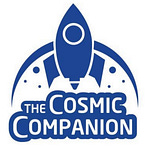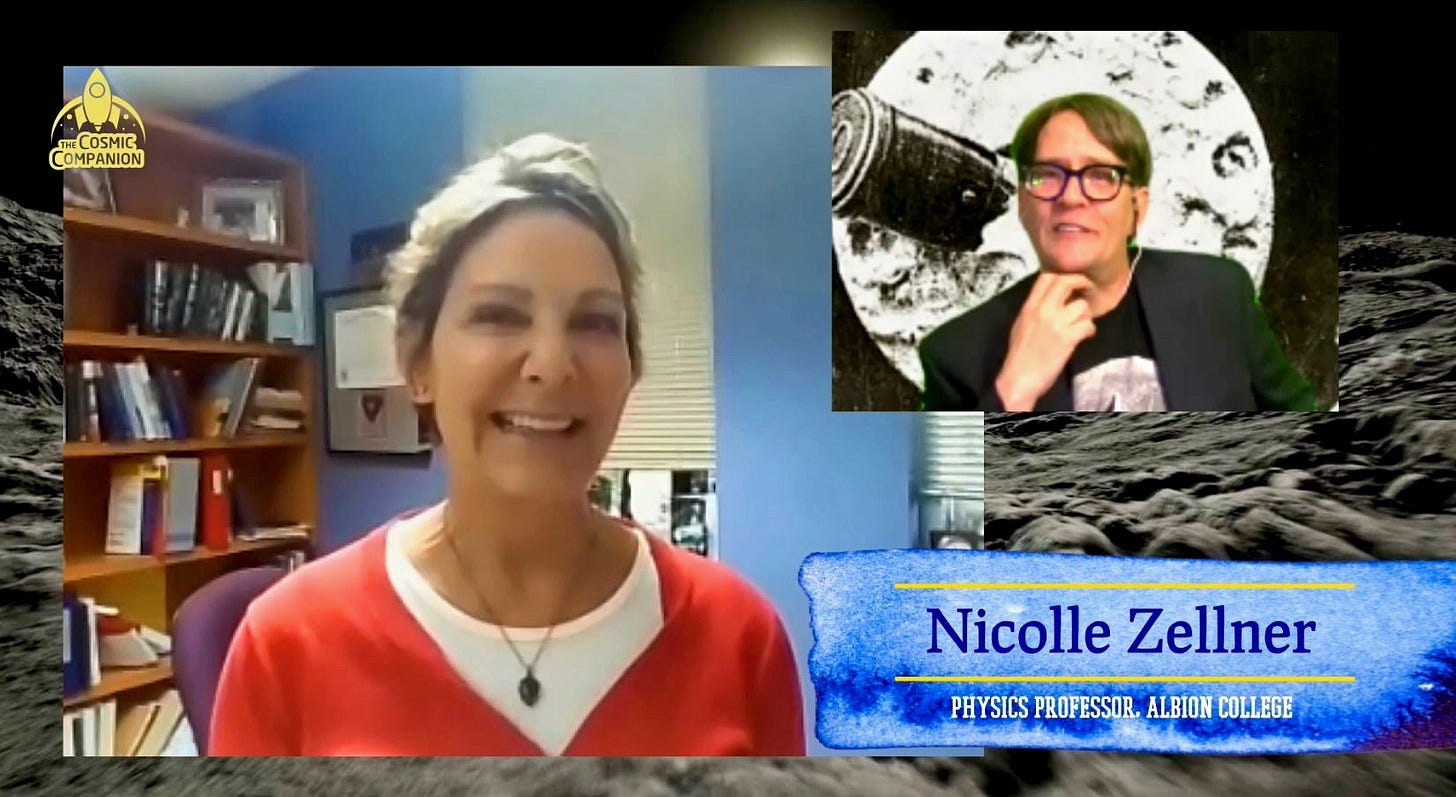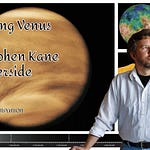Hello everyone!
This April Fool's Day, we are bringing you The Stone-Cold Truth About Moon Rocks. No kidding!
Later on, we will be joined by Albion College physics professor Nicolle Zellner to discuss her research on planetary impacts in our Solar System.
Throughout history, many cultures had myths and legends about the Moon, although they did not have a real scientific understanding of its composition. Some people believed it was made of a metal like silver, while others held to the belief the Moon was a god or goddess.
[Are you saying I am not a Goddess?] {My apologies, Selene!}
Listen to the podcast version of this episode here, or watch it as a video!
However, 25 centuries ago, the ancient Greek philosopher Anaxagoras came to the radical — and correct! — conclusion that the Moon was made of rock. This also correctly explained the reflection of light and eclipses of the Sun and Moon. Naturally, for his brilliant insight, Anaxagoras was exiled from Athens permanently.
[Who needs Athens anyway? I retreated to Lampsacus, where I was treated as a celebrity. And now I have a crater named after me near the north pole of the Moon. Not bad.]
It wasn’t until the development of the telescope in the early 17th century that scientists were able to observe the Moon in detail and begin to study its composition. Over time, we discovered that the Moon is primarily made up of rock and dust, with some metals like iron and titanium.
The Apollo missions of the 1960s and 70s returned over 380 kilograms of lunar rocks to Earth.
[That’s about the weight of a full-grown male grizzly bear and 40 bowling balls. What? I like bowling!]
Once on our home planet, scientists found lunar rocks and regolith contain many of the same materials as the Earth, including oxygen, silicon, and aluminum.
One of the most surprising discoveries from the lunar samples was that the Moon’s composition is actually quite different from the Earth’s in some ways. For example, rocks from the Moon have a much lower iron content than the Earth, providing clues to our shared planetary story.
Our joint history also includes impacts from asteroids and comets. These events played a major role in shaping the geology of the Moon, as well as our home world. Next up, we’re going to rock on with this thought, with physics professor Nicolle Zellner from Albion College.
On 5 November 2019, NASA opened a vial containing rocks and dust collected by Apollo astronauts Gene Cernan and Jack Schmitt in December 1972. This material was sealed around the same time as Johnny Rivers’ hit “Rockin’ Pneumonia and the Boogie Woogie Flu” was topping the charts and was unsealed when Billie Eilish and Halsey were ruling the airwaves.
The Artemis program, like Apollo, aims to gather rocks and lunar regolith and bring them back to Earth for analysis.
Bringing any payload to space requires more fuel for the booster rocket, adding more mass, meaning you need more fuel to get to space, which adds more mass, which means…
[We get it already! It’s just easier to go to the Moon, get rocks, and bring them to laboratories on Earth than it is to launch a laboratory to the Moon!]
Researchers have also examined the lunar surface from orbit above the Moon, using the Lunar Reconnaissance Orbiter and other spacecraft. Following three years in a low polar orbit, LRO transitioned to a stable elliptical orbit, making low passes over the moon’s southern-most regions.
The South Pole of the moon is thought to be home to the most precious resource we could find on the lunar surface — water. Large quantities of water ice, stored in ancient glaciers, is thought to hide in the eternal shadows inside deep craters at the poles of the Moon.
Now, water comes in mighty handy for drinking and washing.
[And watering plants. Why does no one ever talk about the plants?] {You’re right. And plants. Well, LEAVE it to you!}
Thinking back to middle school science class, you’ll recall that water is made up of hydrogen and oxygen. The hydrogen can be used for fuel, since it can be explosive.
[BANG!!!]
With water, oxygen, and fuel, the Moon’s south pole is going to be a popular piece of real estate. I can already hear the debates about whether or not to introduce an upscale resort near the lunar habitats. All that overpriced, over-roasted coffees, medium-sized clothing chains, and cilantro on EVERYTHING!
Oxygen is also helpful if one enjoys, you know… breathing. Surprisingly though, the most common element on the Moon is, in fact, oxygen. It’s found in silica, alumina, lime, iron oxide, magnesia, titan…
[Enough! Get on with it!] {OK… yeah…}
China’s Chang’e program is also exploring the Moon, and plans to work with Russia, building an international habitat near the lunar south pole.
All this is made possible because of what we’ve learned from studying Moon rocks. Pretty cool, huh?
Next week on The Cosmic Companion, we will be Exploring Extraterrestrial Life through Science and Science Fiction. We will have our first-ever triple interview, with Julie Nováková, Giovanni Poggiali, and Eric Choi, talking about their new anthology, Life Beyond Us. This work, pairing original science fiction stories with scientific essays, explores the possibilities of life beyond Earth. Make sure to join us starting on 8 April. You’ll find it wherever you found this episode of the show. Right?
[Moo will!]
If you enjoyed this episode of The Cosmic Companion, please download and share it anyplace you share stuff. I’m not fussy! Head on over to TheCosmicCompanion.net for more episodes or subscribe to our newsletter at TheCosmicCompanion.com.
Clear skies!
James













Share this post